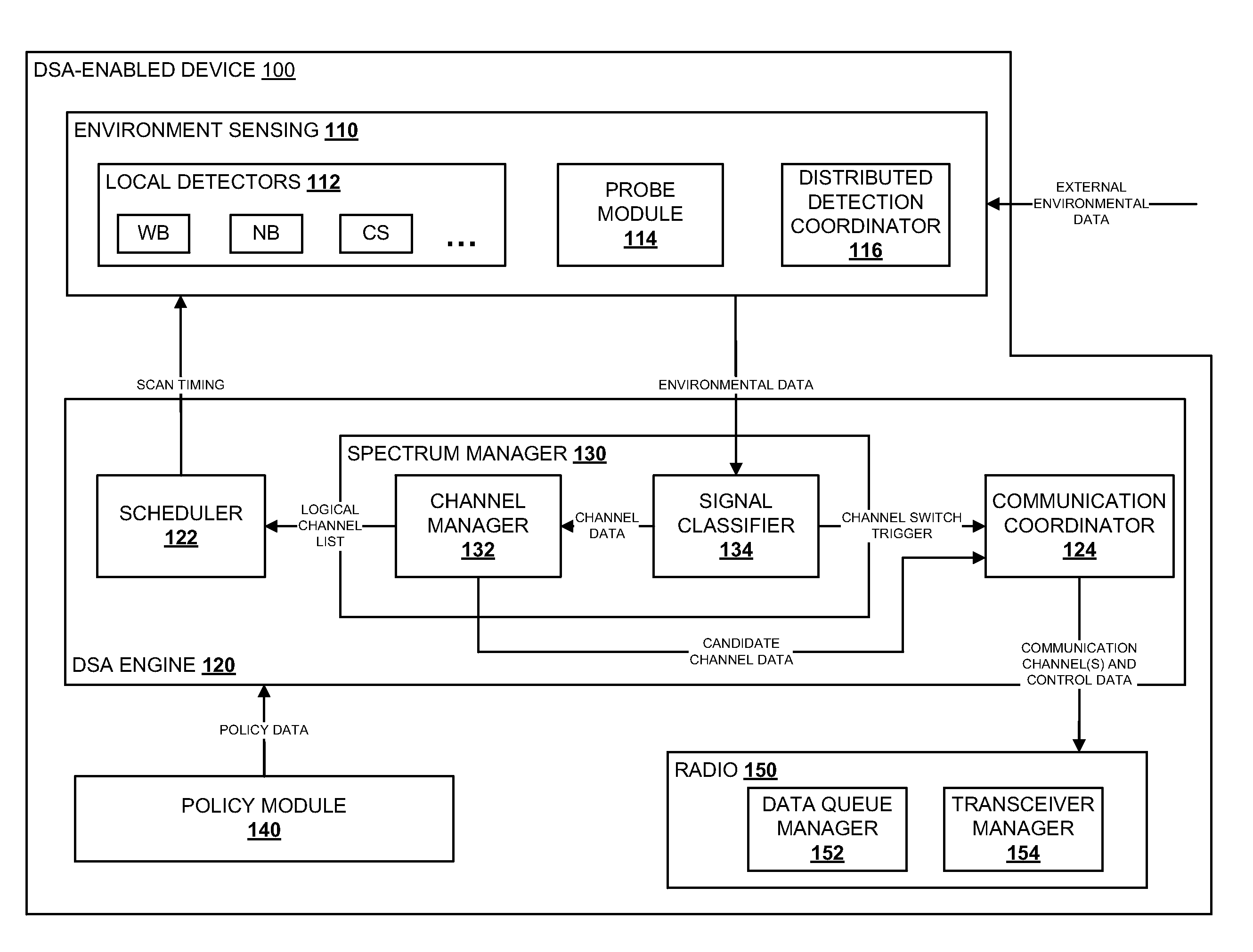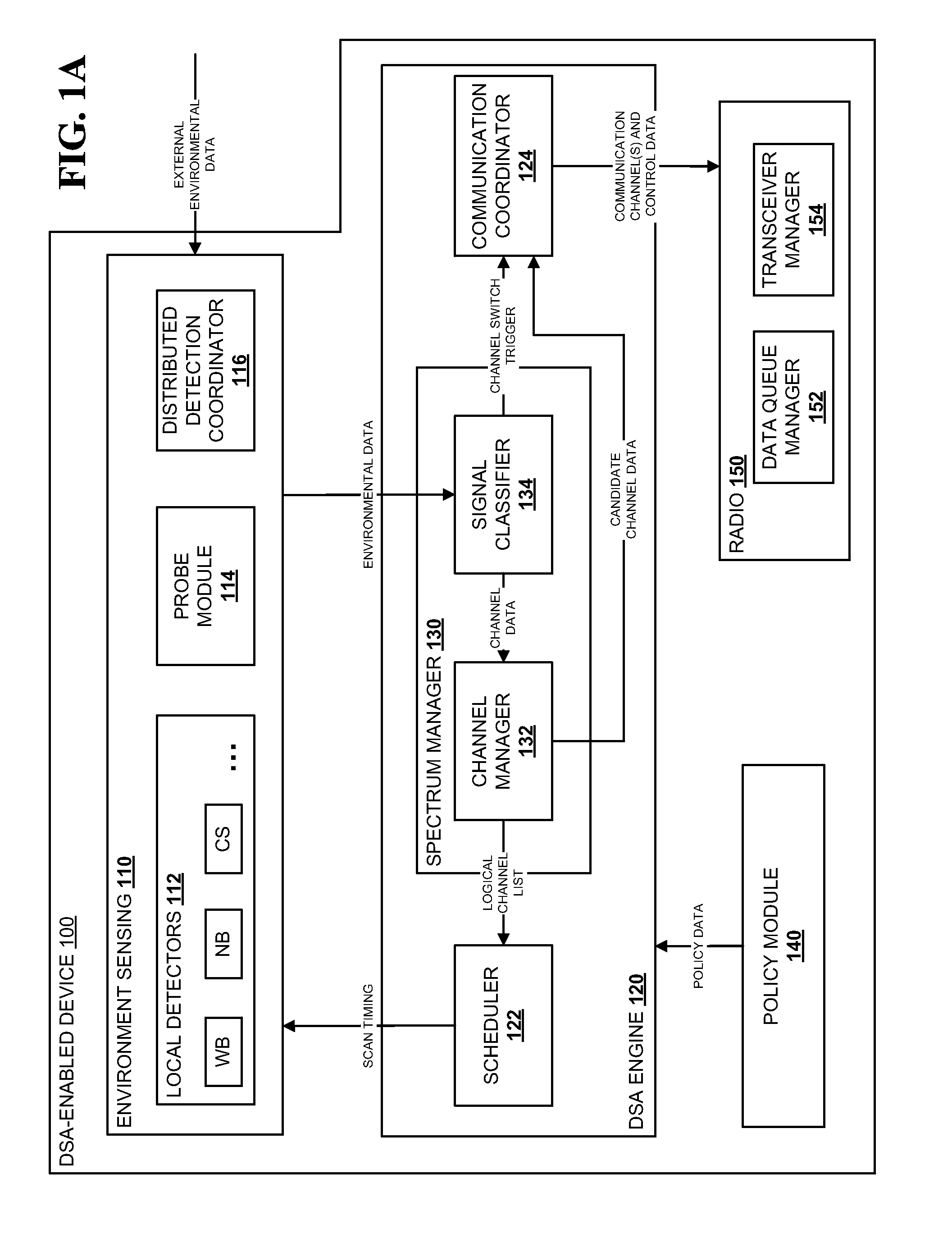Method and System for Dynamic Spectrum Access Using Specialty Detectors and Improved Networking
a dynamic spectrum and detector technology, applied in the field of dynamic spectrum access using specialty detectors and improved networking, can solve the problems of not determining a new band or frequency range from which to search for channels, networked radios and other devices designed to operate within one particular channel or set of channels cannot automatically adapt to significant or challenging changes, and cannot determine the value of measured energy. the effect of reducing the value of the measured energy
- Summary
- Abstract
- Description
- Claims
- Application Information
AI Technical Summary
Benefits of technology
Problems solved by technology
Method used
Image
Examples
example dsa
Receiver Configuration Table
[0479]
Signal ofInterestDSA Receiver SettingSub-F1F2Pre-SelectorRF ATTIF ATTADCband(MHz)(MHz)Band(dB)(dB)SHIFT122523514002245255140032552651151524265275140052752851430628529514007295305140083053151700931532514901032533514001133534524001234535524100. . .. . .. . .. . .. . .. . .. . .
[0480]The DSA transmitter hardware settings may be determined to obtain a desired transmit power level, such as by calibration using a spectrum analyzer. An output spectrum is measured for all RF and IF component settings and the measurements ordered by the transmit power level. For each output power level increment, the best spectrum is selected. The associated RF and IF component settings are then used as the table values. In an operational mode, the hardware settings may be changed during, for example, the 802.16 frame for the detector, the transmitter, and the receiver. Each of these operations may be performed at a different frequency. Periodically, during an operation mode...
example hardware
[0481]This section describes the examples of hardware modules and components that were built and used embodying at least portions of the DSA technology described herein. It will be understood that various combinations of hardware and / or software other than the specific examples described herein may be used without departing from the scope of the invention. For example, various hardware components may be combined, omitted, replaced, or otherwise altered from the following examples without changing the functionality or scope of the resulting system, as will be understood by one of skill in the art. Further, the various examples illustrate how DSA may be implemented on a variety of radio types, although types other than those specifically described may be used. Different MAC types (e.g., CSMA, TDMA and push-to-talk), detector types (e.g., FFT, cyclostationary, Ultra-Narrow bandwidth, and RSSI), and processors types (e.g., FPGA, DSP, GPP and limited capability proc...
PUM
 Login to View More
Login to View More Abstract
Description
Claims
Application Information
 Login to View More
Login to View More - R&D
- Intellectual Property
- Life Sciences
- Materials
- Tech Scout
- Unparalleled Data Quality
- Higher Quality Content
- 60% Fewer Hallucinations
Browse by: Latest US Patents, China's latest patents, Technical Efficacy Thesaurus, Application Domain, Technology Topic, Popular Technical Reports.
© 2025 PatSnap. All rights reserved.Legal|Privacy policy|Modern Slavery Act Transparency Statement|Sitemap|About US| Contact US: help@patsnap.com



